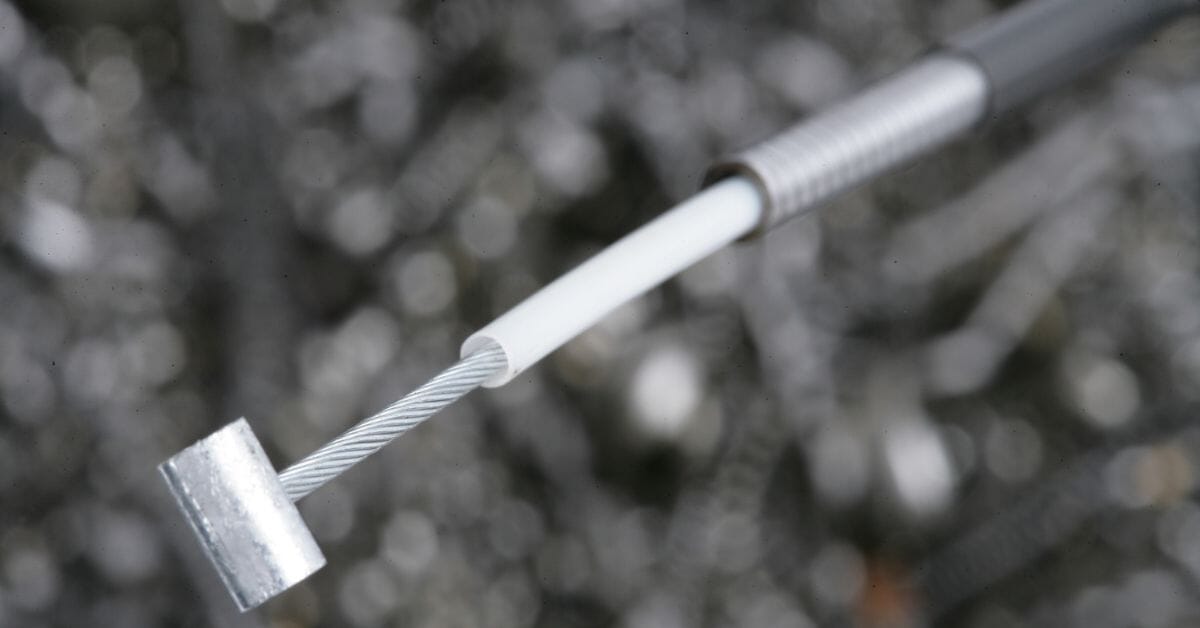How to Lubricate Your Motorcycle’s Cables

Though often overlooked, control cables form the vital link between rider and machine. They’re required to operate crucial components, like the clutch, throttle and even brakes on classic bikes, accurately, repeatedly and under tremendous pressure.
Unfortunately, the nature of their design means both ends of a cable are usually open to the elements, leaving them prone to corrosion and the ingress of grit, dust, road grime and other unhelpful substances.
Left unchecked the cable will start to deteriorate, making the controls stiff, heavy and difficult to operate - reducing the amount of control the rider has over their machine - and can cause it to fail altogether.
How often do motorcycle cables need lubricating?
As a general rule of thumb motorcycle clutch, throttle and brake cables should be lubricated once or twice a year on road bikes, depending on how frequently and in what conditions the motorcycle is ridden. The cables on off-road bikes will need lubricating after every event, in order to keep them operating smoothly and maximise their lifespan.
- Off-road bikes, e.g. motocross, enduro and trials. After a race meeting, or as often as possible after power washing, remove the cables from the bike and flush through with WD-40 (or similar product). Keep flushing until the fluid runs clear. Once clean, lubricate the cable with a light oil (e.g. 3-in-One) and check the cable routing. Also lubricate nipples where required with copper grease.
- Trail bikes – When servicing or after power washing, remove the cables from the bike and flush through with WD-40 (or similar product). Keep flushing until the fluid runs clear. Once clean, lubricate the cable with a light oil (e.g. 3-in-One) and check the cable routing. Also lubricate nipples where required with copper grease.
- Road bikes – At the beginning and end of the summer, remove the cables from the bike and flush through with WD-40 (or similar product). Keep flushing until the fluid runs clear. Once clean, lubricate the cable with a light oil (e.g. 3-in-One) and check the cable routing. Also lubricate nipples where required with copper grease. Note that barrel nipples must be free to rotate in the lever blade.
All Venhill control cables are PTFE ('teflon') lined, and do not need any form of lubrication, although it is best practice to flush them through with WD-40, as outlined above. Copper grease can be used on cable nipples if required.
What should I use to lubricate my motorcycle's cables?
Clutch and throttle cables (and brake cables on older machines) will benefit from a light oil (e.g. 3-in-One).
Speedo and Tacho cables should be lubricated with medium to heavy duty gear oil. We typically use a 80W-90 Gear Oil.
Avoid using using heavy oils or greases, because these can attract and hold particles of dirt, dust and sand, which can form a thick paste inside the cable liner, causing the cable to stick!
You should also avoid generic household/workshop spray oils, which often contain solvents that could damage the cable’s components.
Do I need to remove a cable to lubricate it?
Not necessarily. It’s well worth investing in a cable lubricator; these make the job super easy and are available from most motorcycle shops for around a tenner.

To lube the cable, adjust it so there’s plenty of slack to work with; remove it from the lever, pedal or twistgrip end; clamp the cable lubricator around the inner wire and then insert the tube of your aerosol lubricant into the provided hole and squirt until a small amount runs out of the other end of the cable housing.
If you don’t have a cable lubricator you can do it by making a small funnel out of a plastic bag
- Cut out the corner of the plastic bag.
- Cut out a small hole in the tip of the corner you just cut out.
- Push the upper end of the cable through the tip.
- Use a rubber band to tightly secure the plastic bag to the top of the cable.
- Invert the bag to create a small funnel.
Once you’ve created the funnel, hold the cable vertically and spray some lube into the funnel. Work the inner cable up and down repeatedly to help move the lube along the whole cable. Once the lubricant has reached the bottom of the cable, you’re done.
If you have neither a lubricator or a plastic bag funnel to hand, you will need to remove the cable from the bike - handily, we’ve also written a blog on how to remove and replace a motorcycle throttle cable, which will give you some handy tips.
Buy High Quality Motorcycle Throttle Cables from Venhill
We recommend upgrading to our Featherlight Throttle Cables, which use high quality marine-grade stainless steel inner wire for strength and corrosion resistance. These are lined with PTFE 'teflon' for reduced friction and a smoother action - it also significantly reduces the need for lubrication. The stainless wire runs smoothly in the PTFE liner, so lubrication will not improve performance or feel. By lubricating you run the risk of clogging the cable and allowing dirt to stick to the surfaces.
You can find throttle, clutch and brake cables for most makes and models of motorcycle using our Part Finder.
If your bike isn’t listed, we can make cables to almost any specification with our Bespoke Cable Service.



